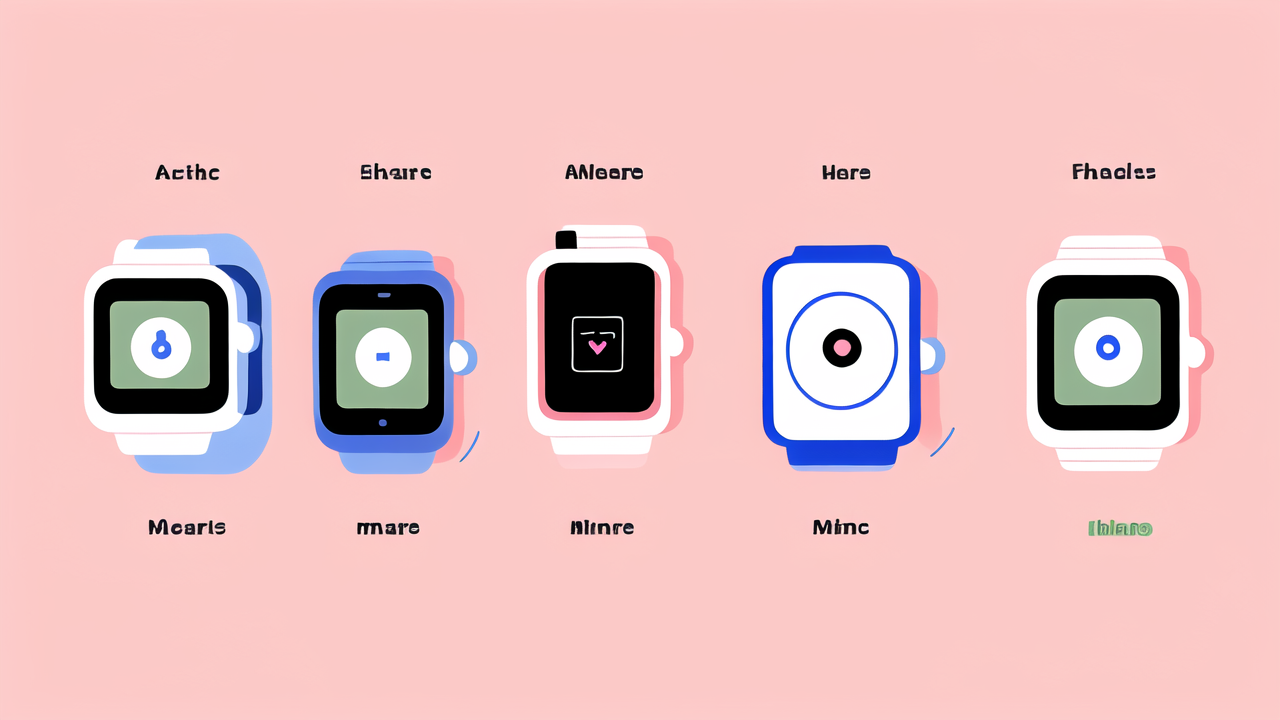Understanding Fitness Trackers: A Primer for the Uninitiated
What is a Fitness Tracker?
A fitness tracker is a wearable device that monitors your physical activity. It's like a digital coach on your wrist. These devices can count your steps, track your heart rate, and measure calories burned. Some even monitor your sleep patterns and stress levels. Fitness trackers come in many forms, from simple bands to smartwatches. They use sensors to collect data about your movements and body functions. This data is then sent to your smartphone or computer for analysis. The goal is to help you understand your health and fitness better. With this info, you can make smarter choices about your lifestyle.

The Importance of Fitness Tracking in Today's Lifestyle
In our busy world, staying healthy can be a challenge. This is where fitness trackers shine. They make it easy to keep tabs on your activity levels. You can see if you're meeting your daily goals at a glance. This instant feedback can motivate you to move more. Trackers also help you set and achieve fitness goals. They can remind you to stand up or take a walk. Over time, this can lead to better health habits. Many people find that using a tracker helps them lose weight or improve their fitness. It's like having a personal health assistant that's always with you.
Key Components of a Fitness Tracker
Fitness trackers have several important parts. The heart of the device is its sensors. These include accelerometers to track movement and optical sensors for heart rate. GPS is common in more advanced models. It helps track your location during outdoor activities. The display shows your stats and notifications. Battery life is crucial - most last several days on a single charge.
Many trackers also have:
- Bluetooth for connecting to your phone
- Water resistance for swimming or showering
- Compatibility with fitness apps
The software is just as important as the hardware. It turns raw data into useful insights. Good trackers have user-friendly apps that make sense of your data. They often provide tips and challenges to keep you motivated.
Selecting the Best Fitness Tracker for Your Needs
Identifying Your Goals and Budget
Before buying a fitness tracker, think about what you want to achieve. Are you trying to lose weight? Train for a marathon? Or just be more active? Your goals will guide your choice. A basic step counter might be enough if you just want to move more. But if you're training for an event, you may need advanced features like GPS.

Consider your budget too. Prices range from $30 for basic models to over $300 for high-end ones. More expensive doesn't always mean better. Think about which features you'll actually use. There's no point paying for extras you won't need.
Some key questions to ask yourself:
- What activities do I want to track?
- Do I need heart rate monitoring?
- Is water resistance important to me?
- How often will I use the tracker?
Your answers will help narrow down your options. Remember, the best tracker is one you'll use consistently.
Analyzing Features and Specifications
When comparing fitness trackers, look at their features closely. Here are some key specs to consider:
- Battery life: Longer is better. Some last a week, others need daily charging.
- Display: Is it easy to read in sunlight? Does it show all the info you need?
- Comfort: Will you be happy wearing it all day?
- Accuracy: Check reviews to see how well it tracks different activities.
- App quality: A good app makes your data more useful.
- Smart features: Some trackers can show notifications or control music.
Don't forget about compatibility. Make sure the tracker works with your smartphone. Some features might only work with certain phone models. Also, think about future needs. A tracker with more features might serve you longer as your fitness journey progresses.
The Role of Wearables vs. Non-Wearable Trackers
Fitness trackers come in two main types: wearables and non-wearables. Wearables are the most common. They include wristbands, watches, and even rings. You wear them all day, so they can track constantly. This is great for getting a complete picture of your activity.
Non-wearable trackers are less common but have their place. These might be clip-on devices or smart scales. They're good for specific tasks like tracking weight or analyzing running form. Some people prefer them because they don't have to wear anything.
Wearables are better for:
- All-day tracking
- Sleep monitoring
- Continuous heart rate data
Non-wearables excel at:
- Detailed analysis of specific activities
- Tracking without wearing a device
Your choice depends on your preferences and what you want to track. Some people use both for a complete fitness picture.
Leveraging Fitness Tracking for Long-Term Success
Tracking Progress and Adjusting Strategies
A fitness tracker is a powerful tool for long-term health. It lets you see your progress over time. This can be very motivating. You can watch your step count or active minutes increase week by week. Or see your resting heart rate improve as you get fitter.

Use your tracker's data to set realistic goals. Start small and gradually increase your targets. If you're not meeting your goals, don't get discouraged. Use the data to figure out why. Maybe you're less active on weekdays. You could then plan more weekend activities.
Remember to celebrate your wins, no matter how small. Every step counts. Over time, small changes add up to big results. Your tracker can help you see these improvements, keeping you motivated.
Integrating Fitness Tracking with Lifestyle and Workout Routines
To get the most from your tracker, make it part of your daily life. Wear it consistently, not just during workouts. This gives you a complete picture of your activity. Use its features to enhance your routines. For example:
- Set reminders to move if you sit for too long
- Use the heart rate monitor to stay in the right zone during exercise
- Track your sleep to ensure you're getting enough rest
Many trackers integrate with other apps and devices. This can create a more comprehensive health plan. You might connect it to a food tracking app or smart scale. This lets you see how your activity affects your weight and nutrition.
Don't let the tracker rule your life, though. Use it as a guide, not a strict rulebook. Listen to your body first. If you're tired, rest, even if your tracker says to move more.
Best Practices for Fitness Tracker Users
To make the most of your fitness tracker, follow these tips:
- Be consistent: Wear it every day for accurate tracking.
- Keep it updated: Regular software updates can add features and fix bugs.
- Customize your goals: Set targets that challenge you but are achievable.
- Use all the features: Explore your tracker's capabilities to get full value.
- Share with friends: Many trackers let you compete or share progress for motivation.
- Analyze trends: Look at long-term data to spot patterns in your health.
- Charge regularly: Make charging part of your routine to avoid missing data.
- Clean it often: Sweat and dirt can affect accuracy and cause skin irritation.
- Be patient: Lasting lifestyle changes take time. Trust the process.
Remember, a fitness tracker is a tool to help you. It's not a replacement for professional medical advice. If you have health concerns, always consult a doctor. Use your tracker to support a healthy lifestyle, but don't let it dictate your choices. Stay focused on your overall well-being, not just the numbers on your wrist.




Leave a comment
This site is protected by hCaptcha and the hCaptcha Privacy Policy and Terms of Service apply.